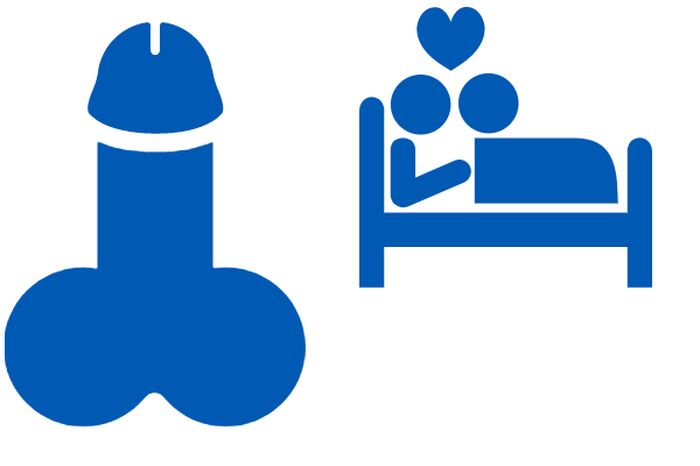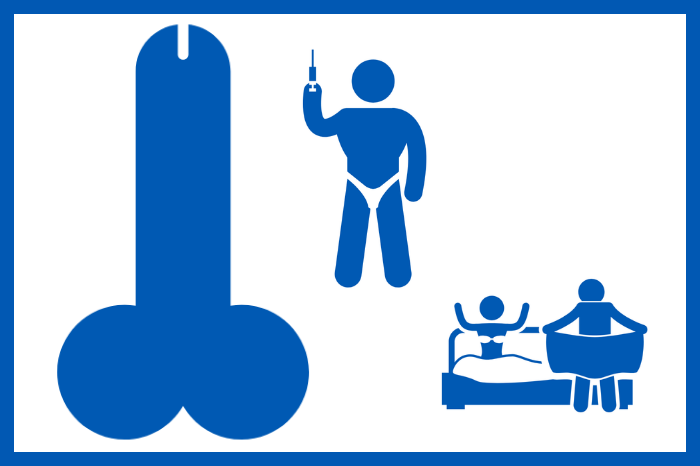What is fetish? Can it be harmful?
We often use the word ''fetish'' completely at random. You may have referred to shopping as a fetish because you love shopping so much. Or you may have a friend who uses that word when he's found something exciting for him. The term is widely used to refer to any activity or item that people enjoy during sex and masturbation, but it is often used incorrectly.

What is a fetish anyway?
According to the American Psychiatric Association, fetish is defined as the sexual interest in something for the purpose of obtaining pleasure using that device. Before, fetishes were listed separately from sexual obsession with certain parts of the body, such as the feet, which by the way is a very common fetish. However, now it includes body parts, in addition to objects, scenarios, dressing up in costumes and any other obsession that arouses the playful with its own sexual interest, can be considered a fetish.
In this context, fetish is different from sexual fantasy, since fantasy refers to ideas and mental images that arouse sexual desire with the possibilities of experimentation in sex, whether or not they can be put into practice.
The fetish is closely related to the practice of BDSM, which stands for “Bondage, Discipline, Domination, Submission, Sadism and Masochism”. The practice refers to sexual relations based on the pleasure of pain, that is, it is a game of seduction where there is a dominator and a dominated. Despite appearing aggressive, it is a practice that demands respect and consent from the people involved.
What is the cause of the fetish?
There are many theories about what could cause a fetish. Some people believe that this comes from childhood. If something or activity has become associated with masturbation or arousal, it can become a fetish in later life. For example, if you watched pornography with women dressed in leather when you were younger, you may just be excited about leather in the future.
Another theory revolves around children transferring feelings of unrequited love from their parents to something, resulting in a fetish. This is closely related to the field of psychology.
Some fetishes can be caused by brain chemical activity, which is invisible to the human eye and even difficult for scientists and doctors to understand. Some researchers believe that the reason for the prevalence of foot fetish is that the areas of the brain that coincide with the genitals and the feet are adjacent, and the communication between them intersects.
An obsession with feet can lead to a real fetish for shoes or socks. Interaction or even the sight of shoes may be necessary for a person to have an orgasm. There is no need for sexual intercourse per se for there to be a fetish, it can be used simply in masturbation.
What are the most common fetishes?
There are many different fetishes, the list is immense, but we list 15 of them, check them out:
1 - Podolatry: fetish for feet, shoes such as high heels and socks.
2 - Crossdressing: obsession with wearing pieces of clothing of the opposite sex, so heterosexual men can feel pleasure when using their partner's lingerie and women when using their underwear, but it can be any piece from the opposite wardrobe.
3 - Latex, Leather and Rubber: fetish for clothes made of these materials. These clothes are even used a lot in the practice of BDSM.
4 - Stigmatophilia: attraction to piercings and tattoos.
5 - Pet play: fetish for behaving like a pet.
6 - Voyeurism: fetish for watching other people having sex, which can be a big problem if there is no consent from these people.
7 - Age play: obsession with staging where someone acts or treats another person as if they were a child.
8 - Odaxelagnia: desire to moderate and/or be bitten in the sexual act.
9 - Bondage: tying or restraining someone with their consent, through ropes, handcuffs, gags, etc. Bondage is one of the tenets of BDSM.
10 - Domination and Submission: pleasure in dominating or being dominated, which is also part of BDSM.
11 - Sadomasochism: pleasure in seeing or feeling the pain of the other, always with the consent of the people involved, according to the term BDSM.
12 - Exhibitionism: pleasure feeling when you know that you are being observed (a) naked.
13 - Claustrophilia: it is the pleasure felt by being confined in a small space, such as in a closet or cage.
14 - Mechanophilia: attraction to cars and car parts or machines.
15 - Tricolophily: sexual desire for hair.
16 - Chirophilia: sexual attraction to the hands.
17 - Axilism: horny for armpits.
This list can go on indefinitely. Anything that exists can be someone's fetish, no matter how strange it seems. Having a fetish or similar tendencies is more natural than you might think.
When does fetish become a problem?
Most of the time, a person can engage in fetishistic behavior without experiencing any negative effects.
Fetishism is only a problem, even considered a disorder, when it becomes the main source of sexual satisfaction, damages the relationship with the partner and causes suffering. However, this is the case for less than 1% of the population.
Whether the person wants to use their fetish alone or as a couple is fine, as long as they are happy with it and as long as no one is forced to participate. As long as all parties agree, no one will likely be harmed.
When obsession is a disorder, the person feels out of control and may disappear from work or home to secretly pursue their obsession, disrupting their everyday life. Some people with these disorders may even steal to obtain the desired object.
Often, they may prefer not to have intentional sexual relationships with other people so that they can spend more time on this obsessional purpose.
For those whose fetishism becomes a problem, psychiatric help should be sought from a qualified physician. Various types of therapy have been shown to be effective in treating the fetish when it becomes a disorder, and medications can also help.
But for 99% of people who exhibit some form of fetish, the best bet is to find a partner who is willing to try them out!



















